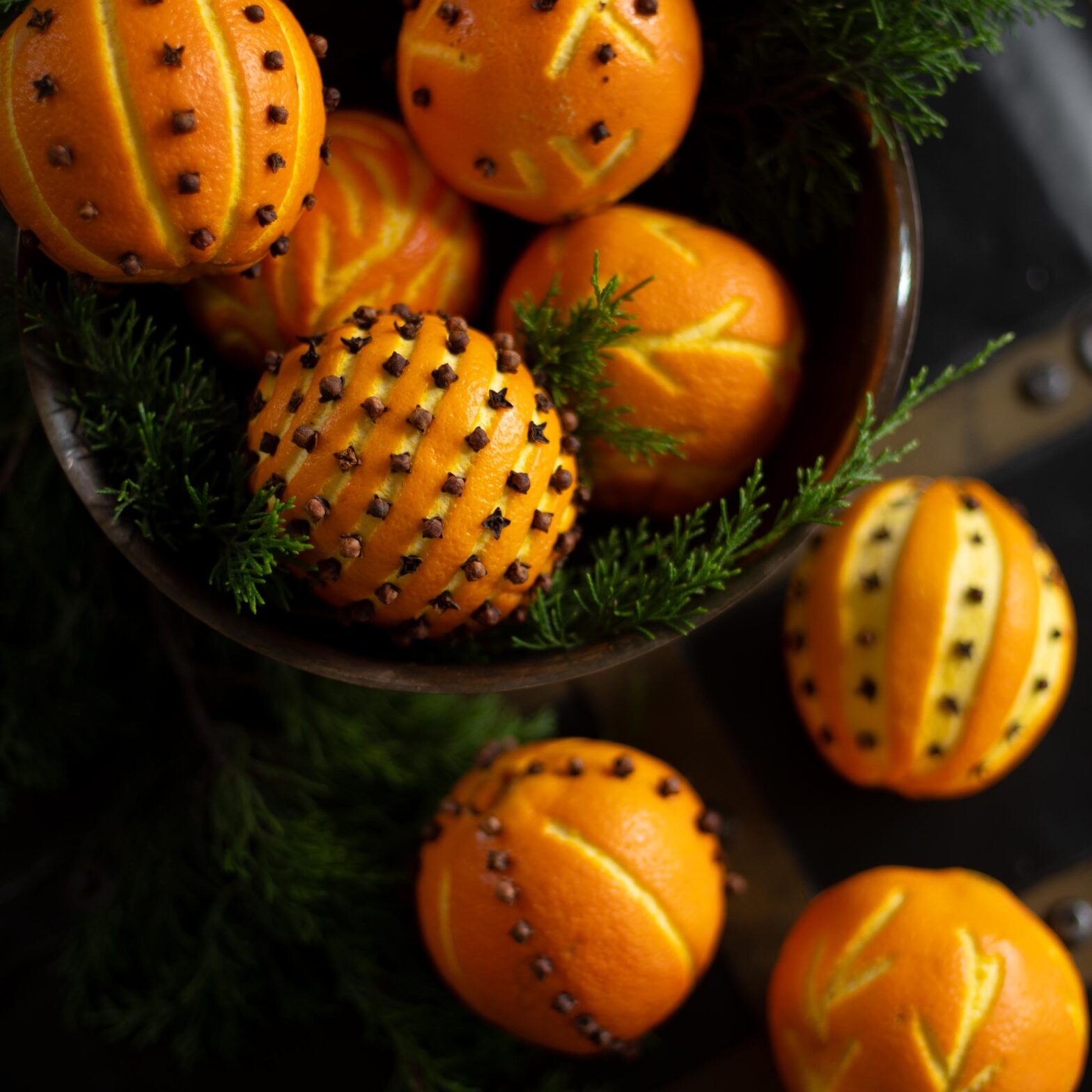Over the years I’ve really fallen in love with handmade natural Christmas decor. I appreciate how it makes you take time to slow down and enjoy the season. In the past I’ve shown how I make all my own evergreen garland from scratch each year and how I create my own fresh christmas wreaths. One other way I love to bring a little old world magic into my home with handmade Christmas decor is by making clove-studded orange pomander balls!
*This blog post contains affiliate links, meaning that if you purchase any of the items using the links I provide I, as the author of this website, will receive a very very small commission from that sale. This is a great way to help support your favorite bloggers at no cost to you. Think of it like a tip jar that costs you nothing!
The Fascinating History Of Pomander Balls
Back in the middle ages, things did not smell so great. The solution to this problem was to carry around small sachets or decorative vented lockets filled with a sweet smelling resin called ambergris to help mask orders (which they believed would also help ward off illness).
The word pomander came from the French “pomme d’ambre” (“apple of amber”), which was inspired by both the scent and the golden color of the fragrant ambergris resins used the sachets.
Over time, these personal scent sachets became more broadly used to scent the entire home as bowls of fragrant herbs and dried fruit began appearing during holidays (just like you might put out a scented candle when guests come over today).
It wasn’t until the Christmas obsessed Victorians that the pomander took on the form of a clove-studded orange and was forever linked to the holiday.
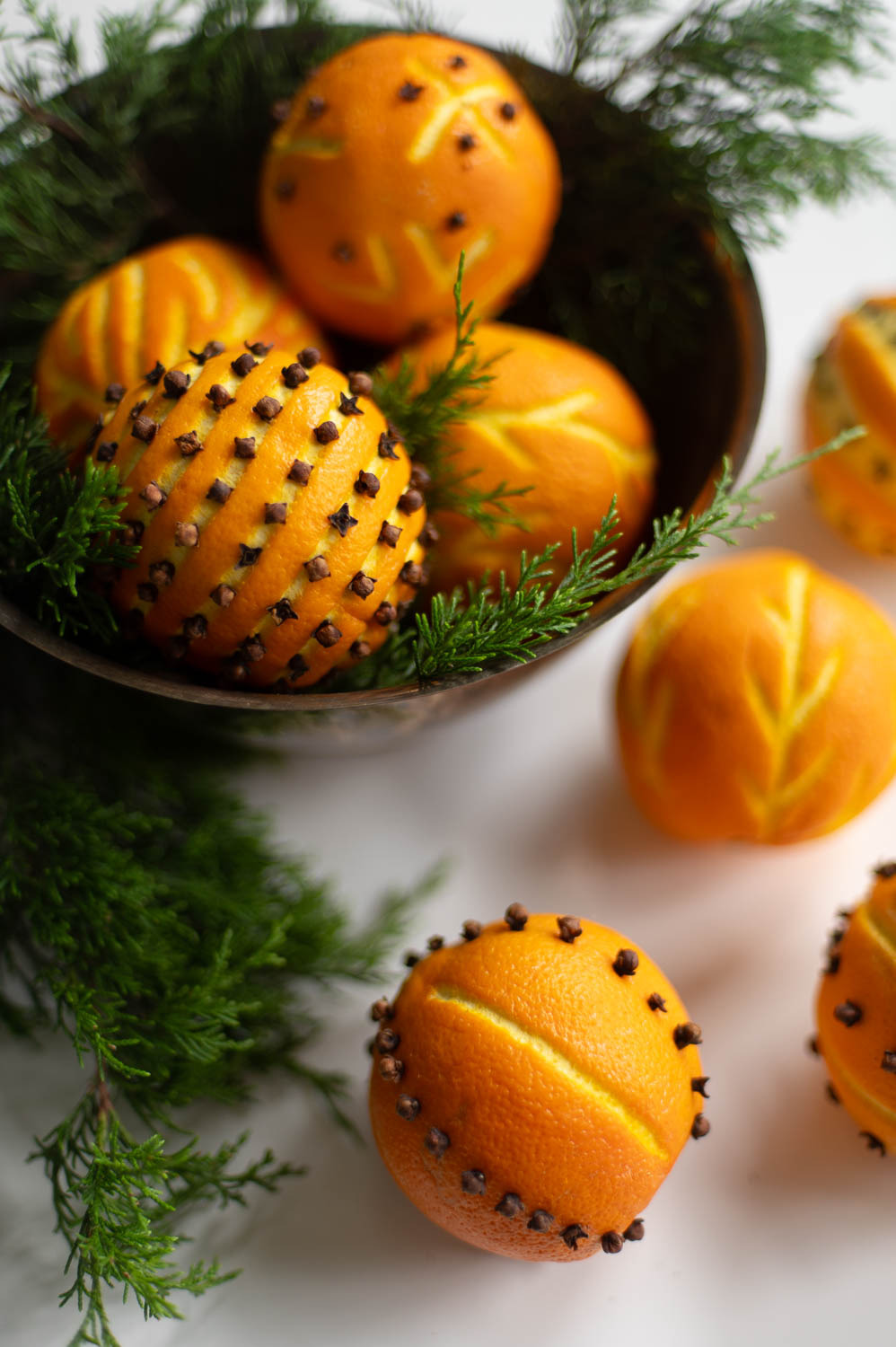
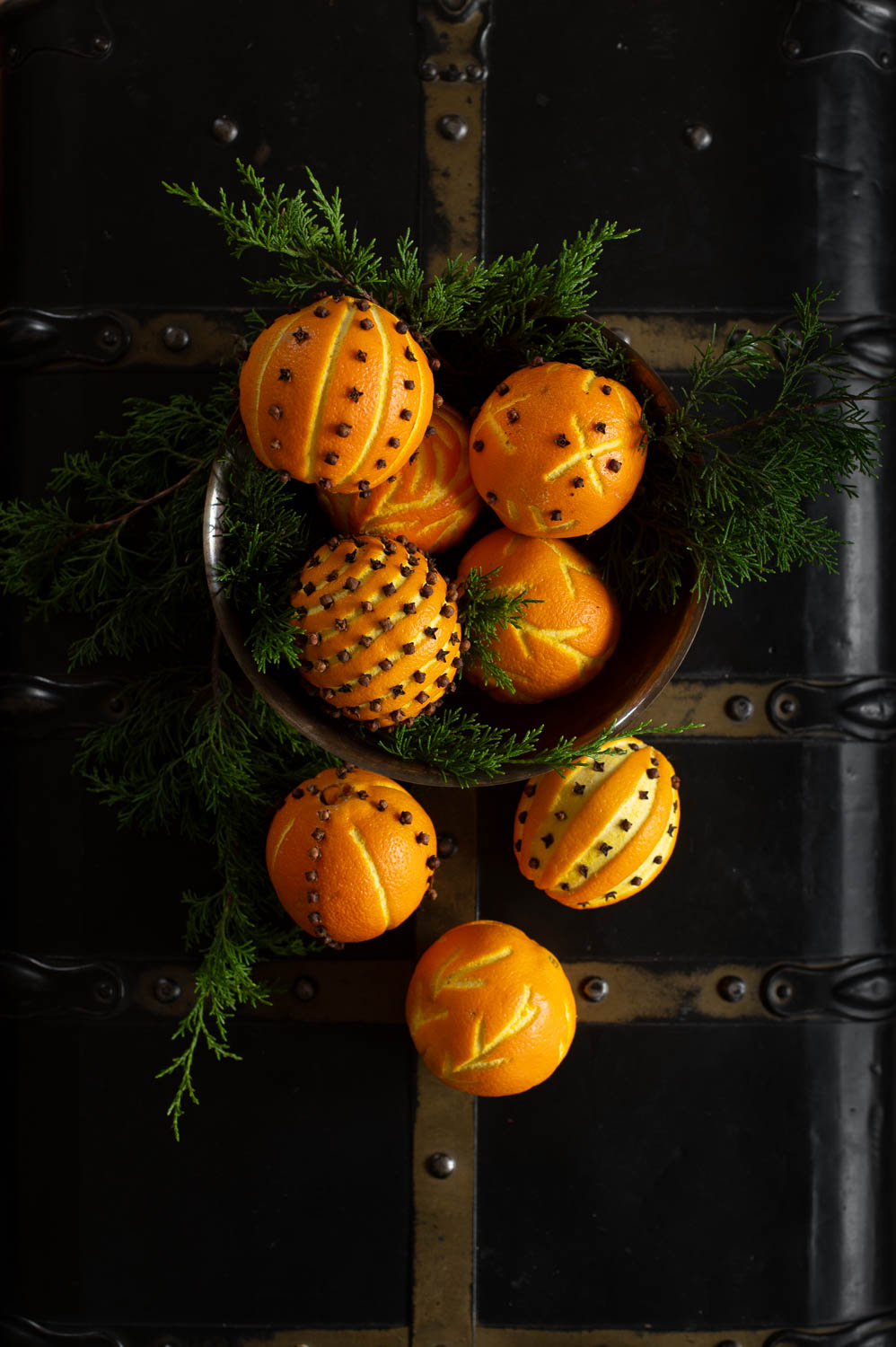
I Thought Clove Orange Balls Were A Colonial Christmas Decoration?
An interesting historical note I found fascinating is that there is a widely believed myth that pomander balls date all the way back to colonial times. This myth came about in the 1930s when Colonial Williamsburg was being restored and the residents wanted to decorate for Christmas. One big problem with that however, colonists did not decorate for Christmas.
This left the historical society with a bit of a conundrum on how exactly they were supposed to decorate. Their compromise was to allow residents to utilize historic Victorian style Christmas decor made from natural materials that would have been around and available to colonists.
However, Colonial Williamsburg will be the first to admit that any colonist lucky enough to have an orange would have eaten it and not decorated their front door with it.
How To Make Clove and Orange Pomander Balls For Christmas
Now that you’ve got all the juicy backstory details, let’s dig into how to make a clove-studded orange.
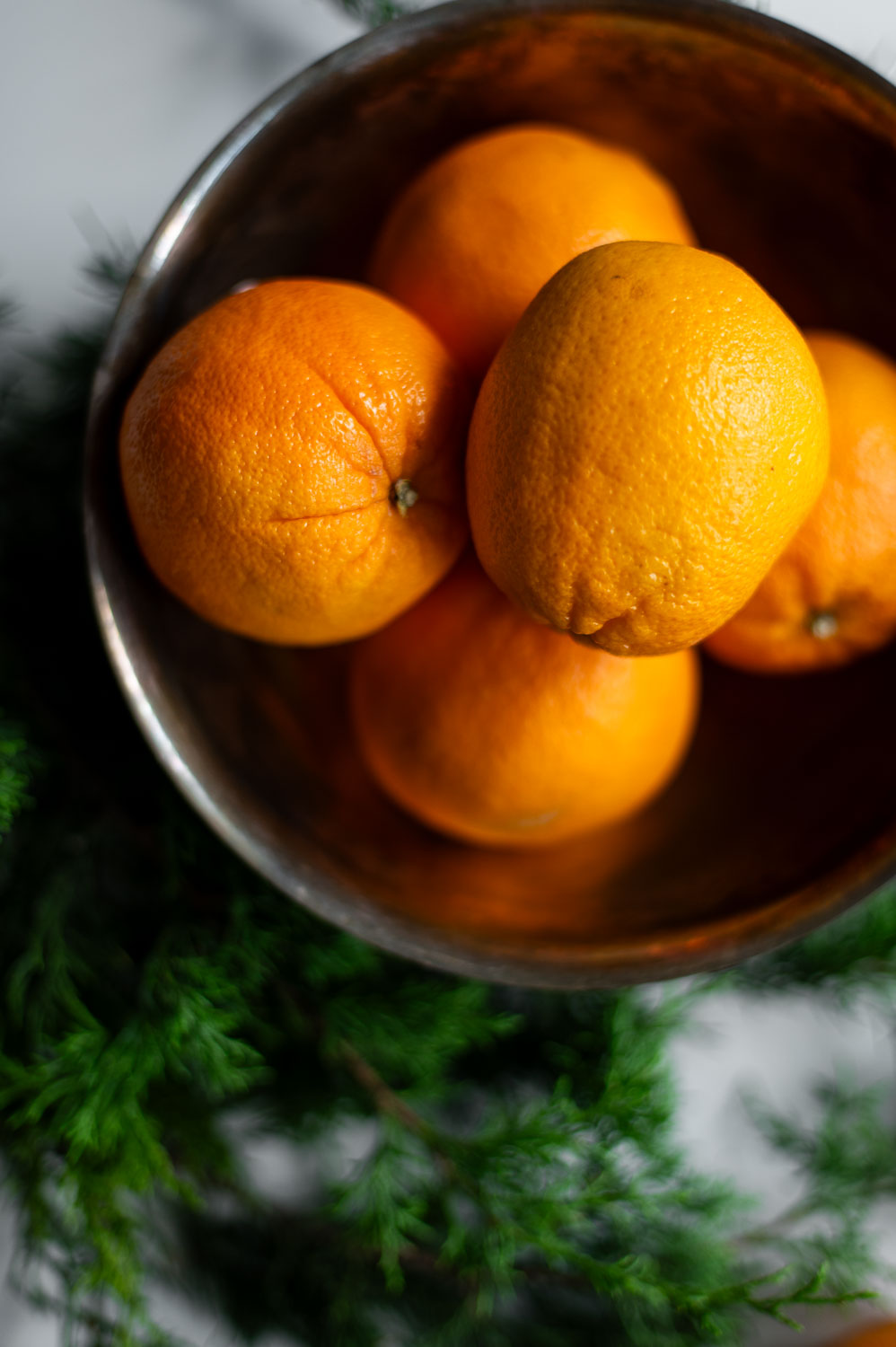
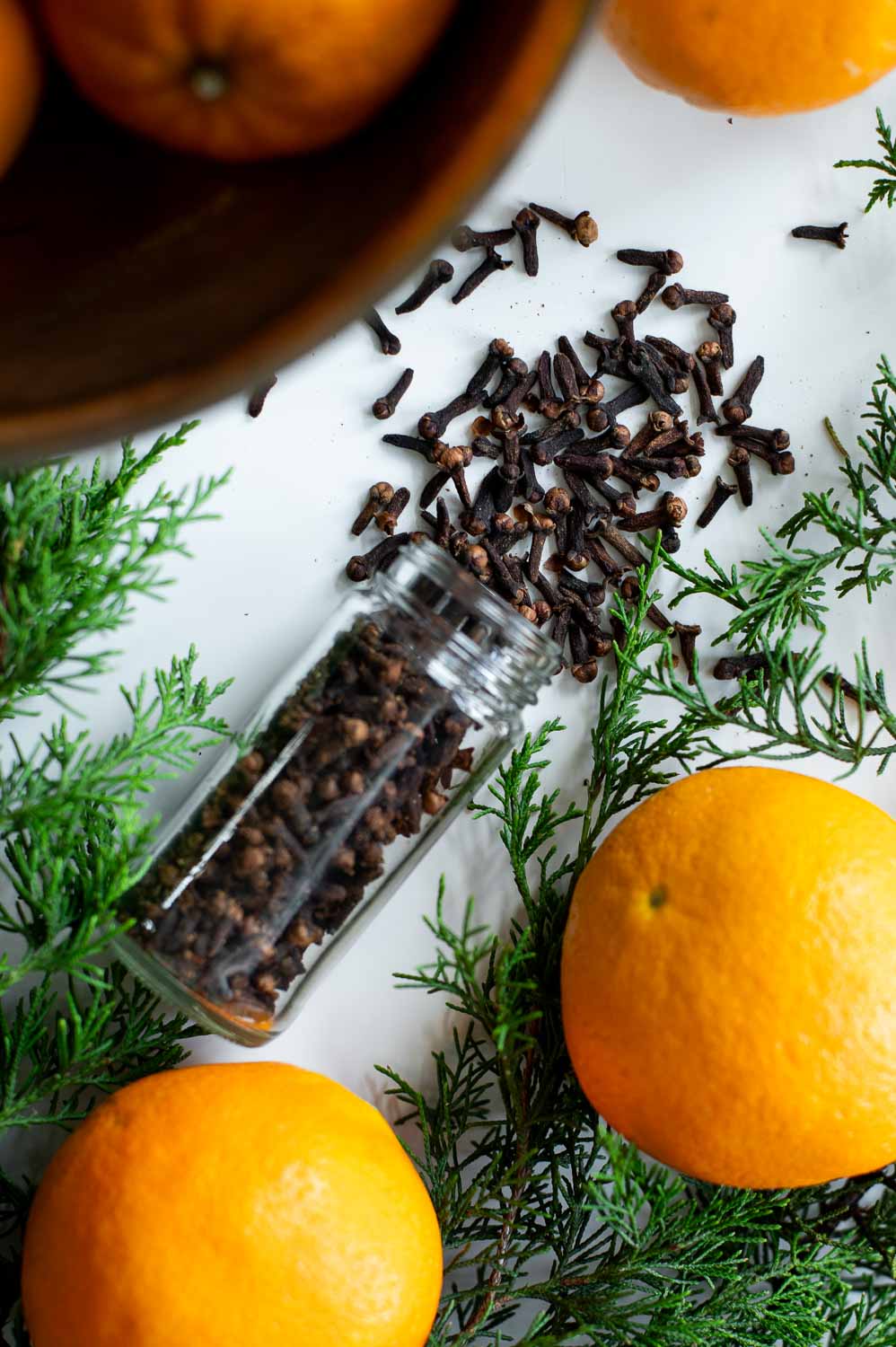
Supplies Needed
- An Orange
- Whole Cloves
- A Toothpick (Or Other Sharp Stabby Tool)
- A Rubberband
- Optional: A Zester With Channel Knife
Step One: Mark Your Line & Poke Holes In Your Orange
While you can create any pattern you like on your orange with your cloves, the most traditional design is done by creating lines around the vertical circumference of your orange. One way to ensure you’re making a neat straight line all the way around is to place a rubberband around your orange and use it as a guide.
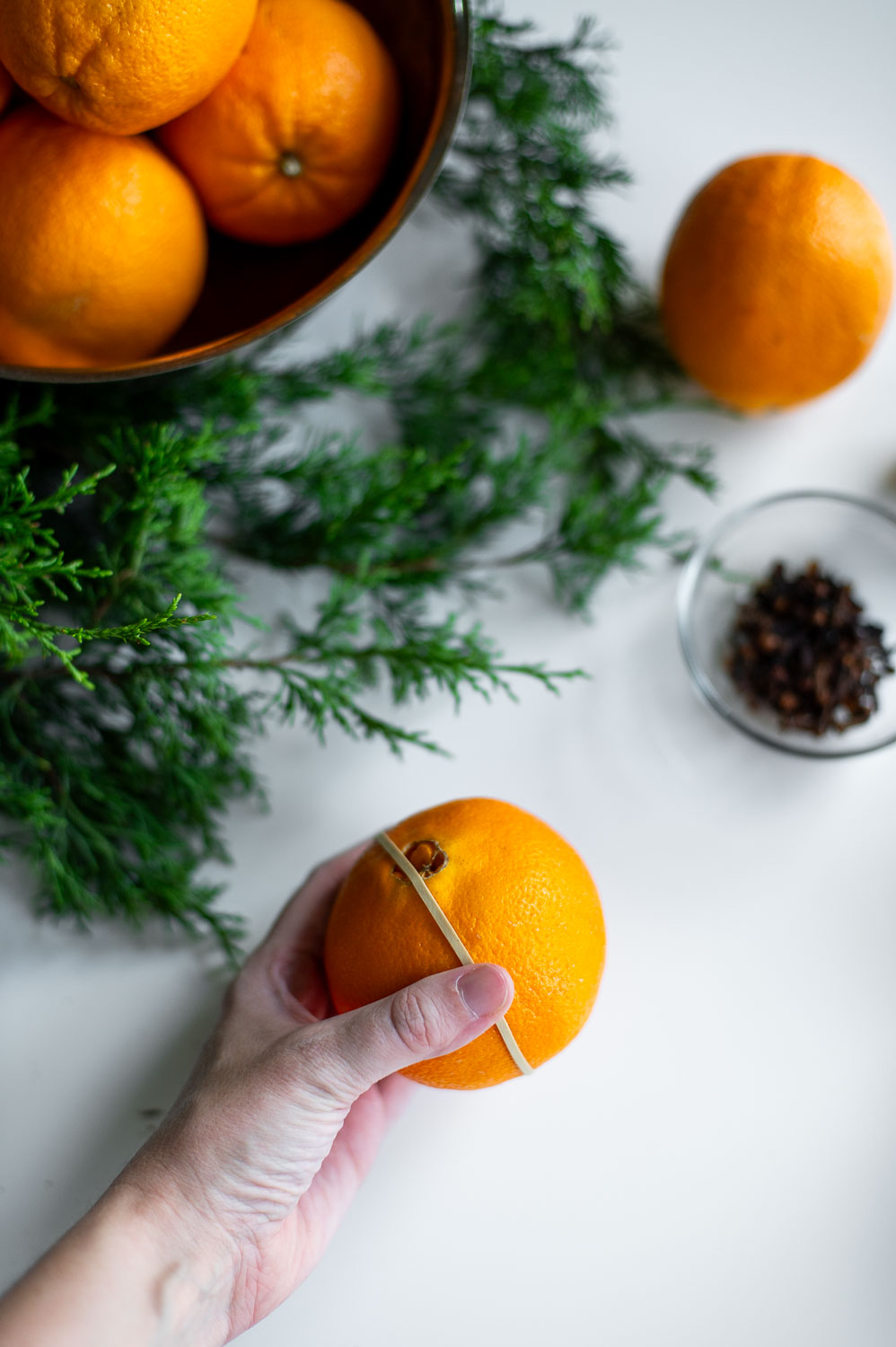
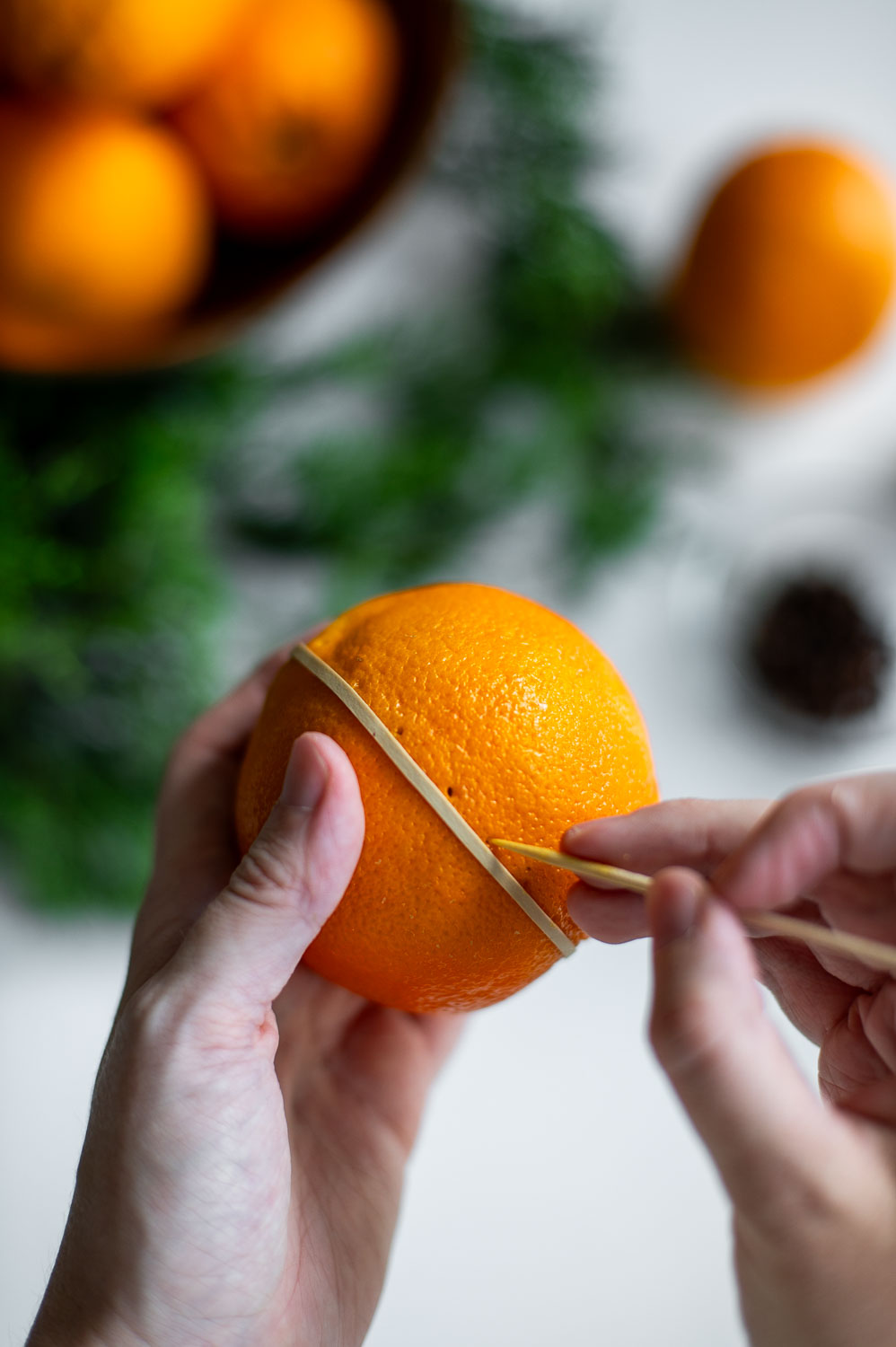
Once the rubberband is where you want it, you’ll simply take your toothpick and poke holes all the way through the rind of the orange at short intervals all along the length of the rubberband until you’ve made it all the way around the orange.
Step Two: Insert The Whole Cloves Into The Poked Holes
Next, take a whole clove and stab the pointy end of the spice into the hole you just created with your toothpick.
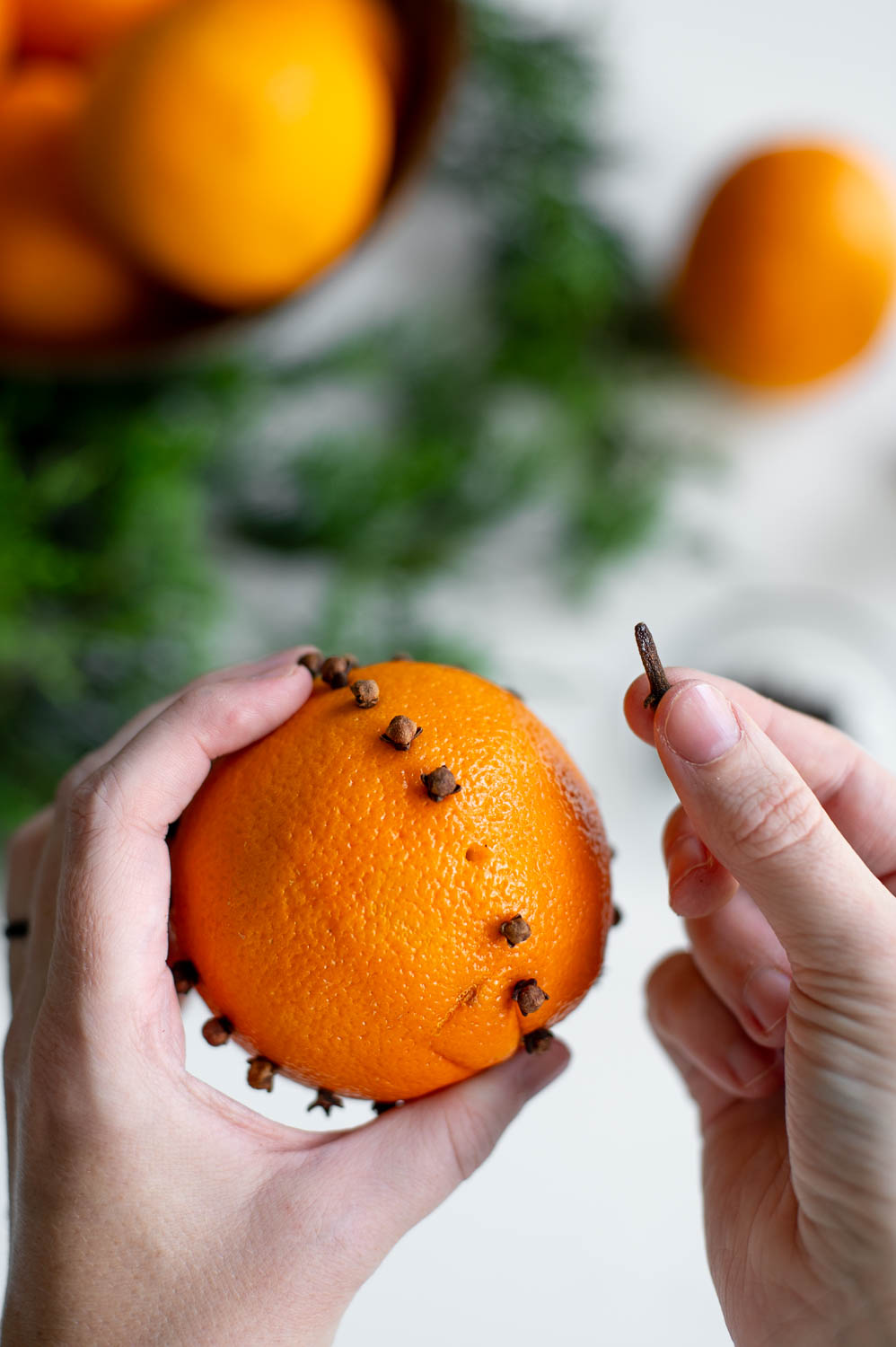
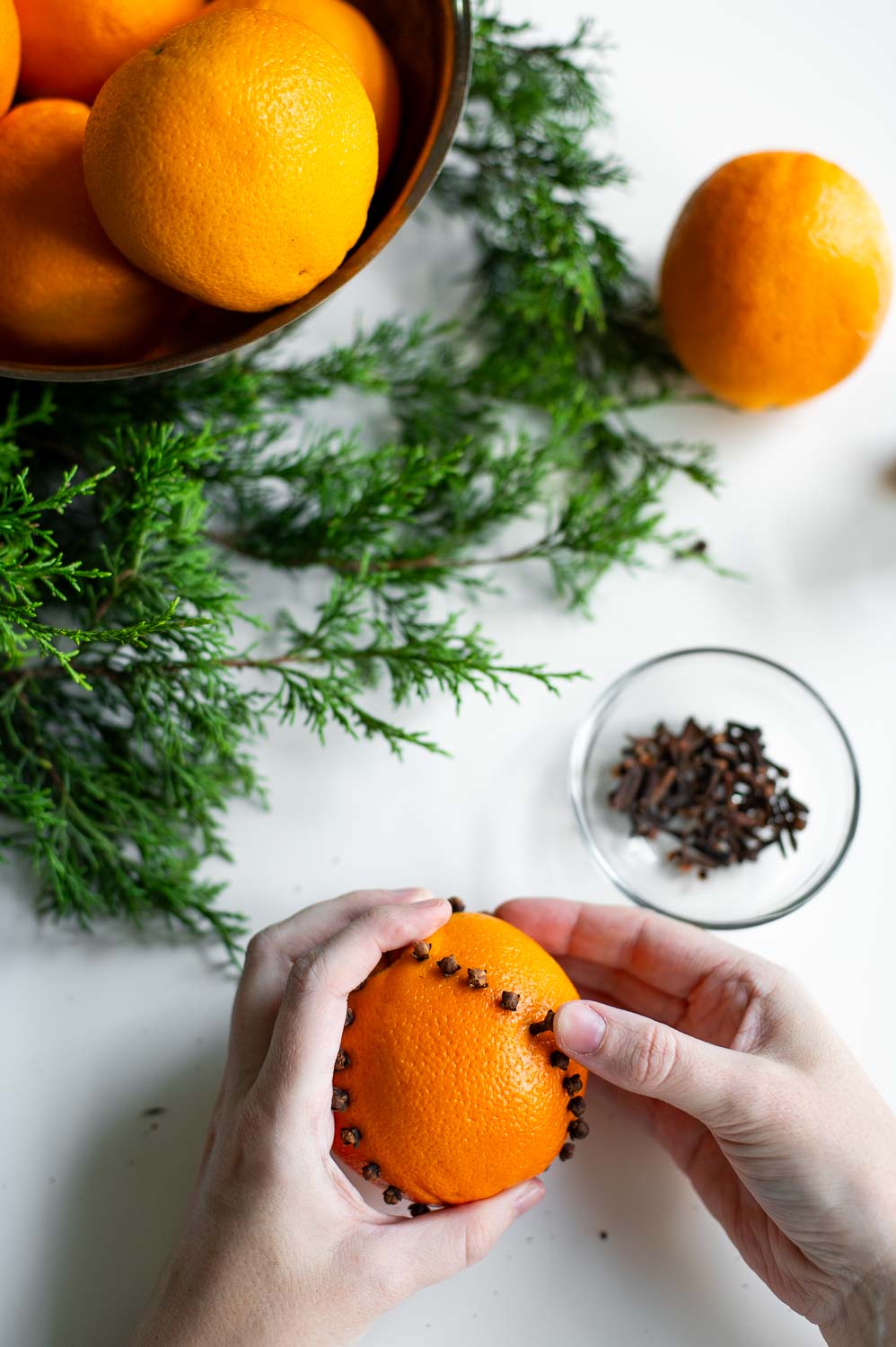
Careful not to push too hard or you might smash the head of the clove.
After you’ve completed one row, repeat the process over and over again until you have finished your design.
Step Three (Optional): Use Your Channel Knife To Create Decorative Designs In Your Orange Rind
If you want to take your pomander ball decorating up a notch, you can also add decorative elements to your design by using something called a “channel knife“. Commonly used for creating cocktail garnish, these can be purchased as a stand alone kitchen tool, or are often included on some zester tools. Alternatively you can also use a more niche tool called a lino cutter, which allows for more intricate and detailed designs. For this tutorial I used a simple zester multi-tool I picked up from the thrift store that included a channel knife.
The basic premise of all these tools is to allow you to carve off just the top orange part of the rind while leaving the white inner pith behind.
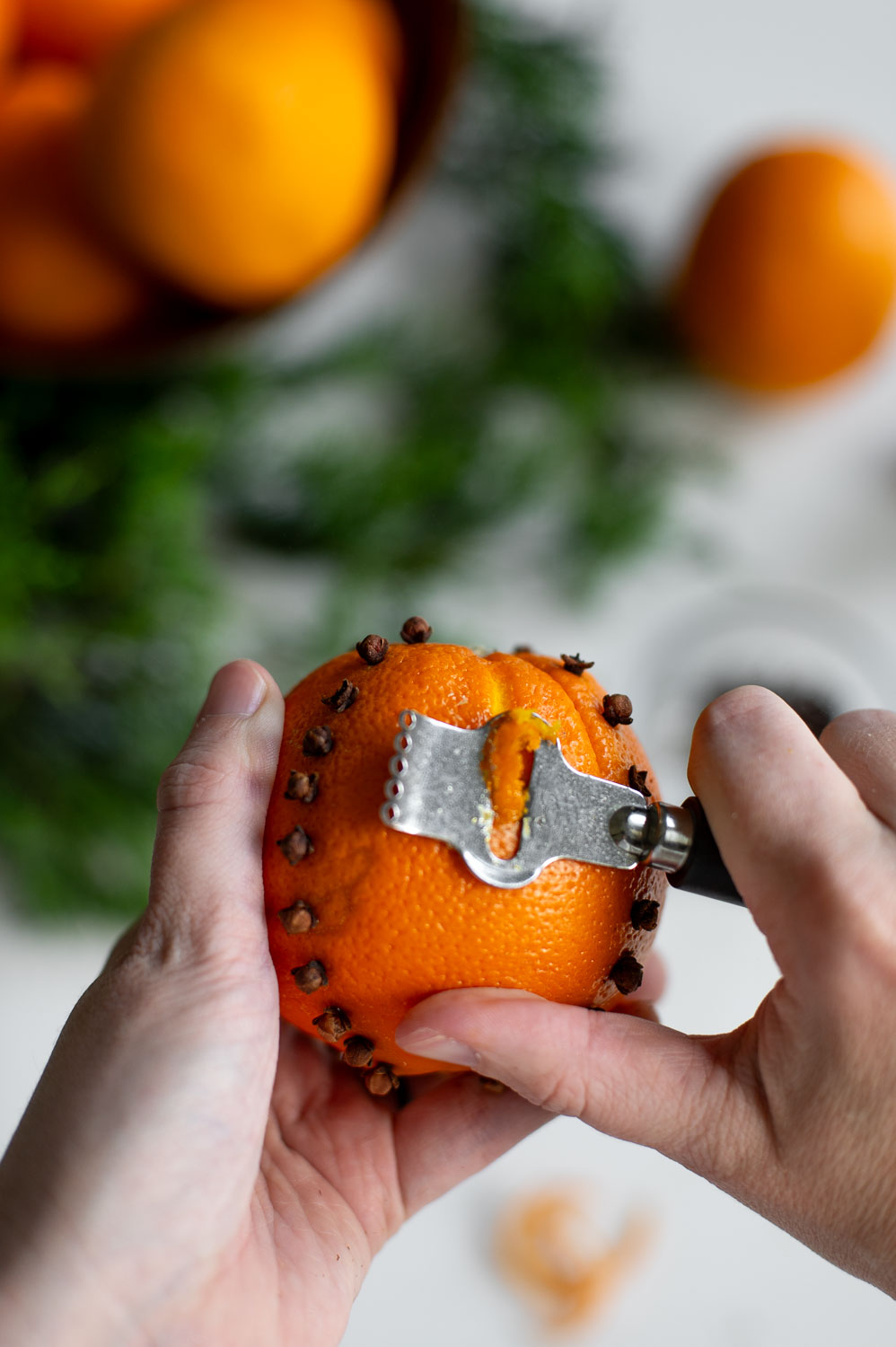
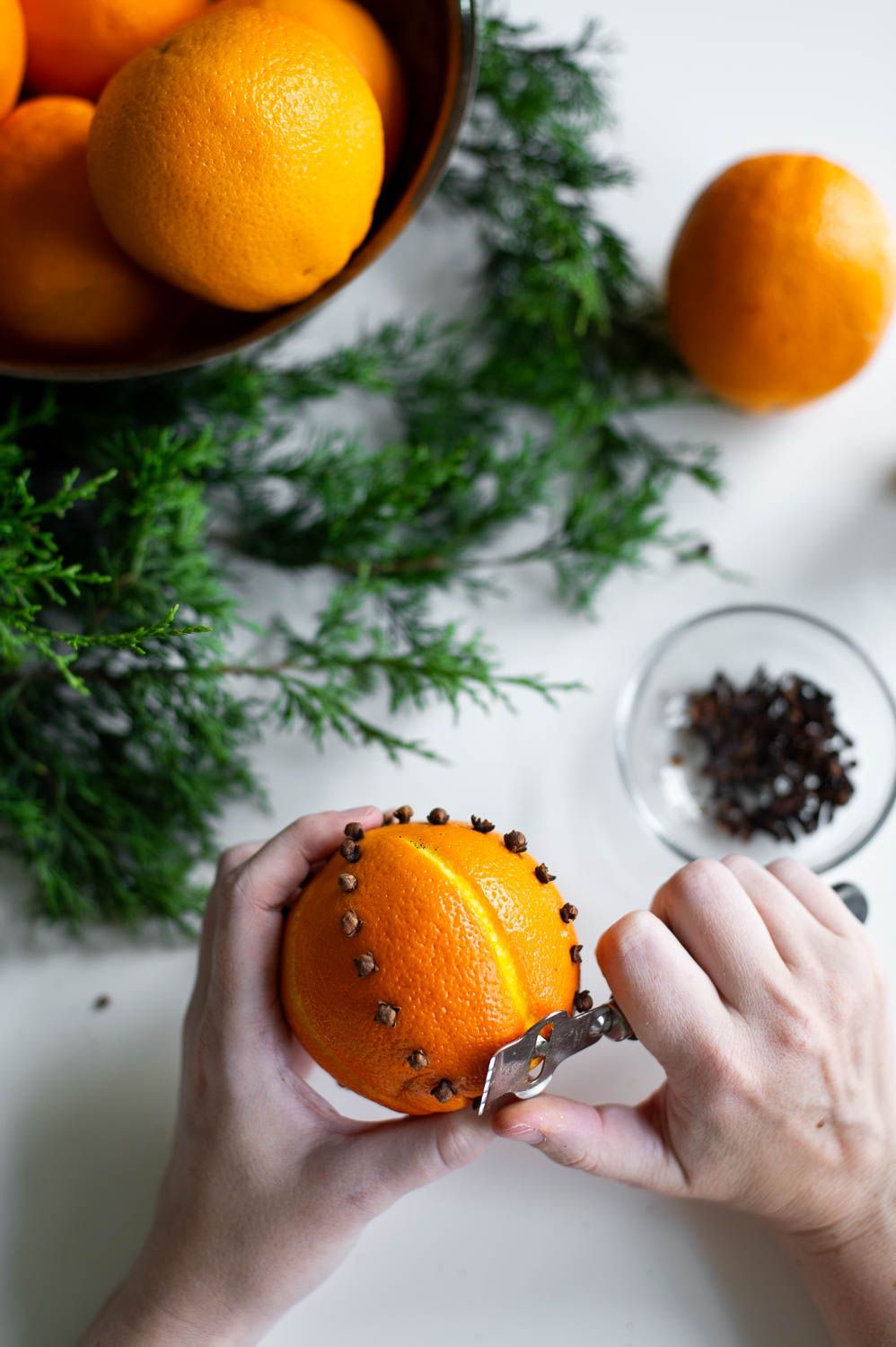
One traditional pattern that uses this technique is to create a simple spiral pattern going all around your orange from top to bottom with your channel knife.
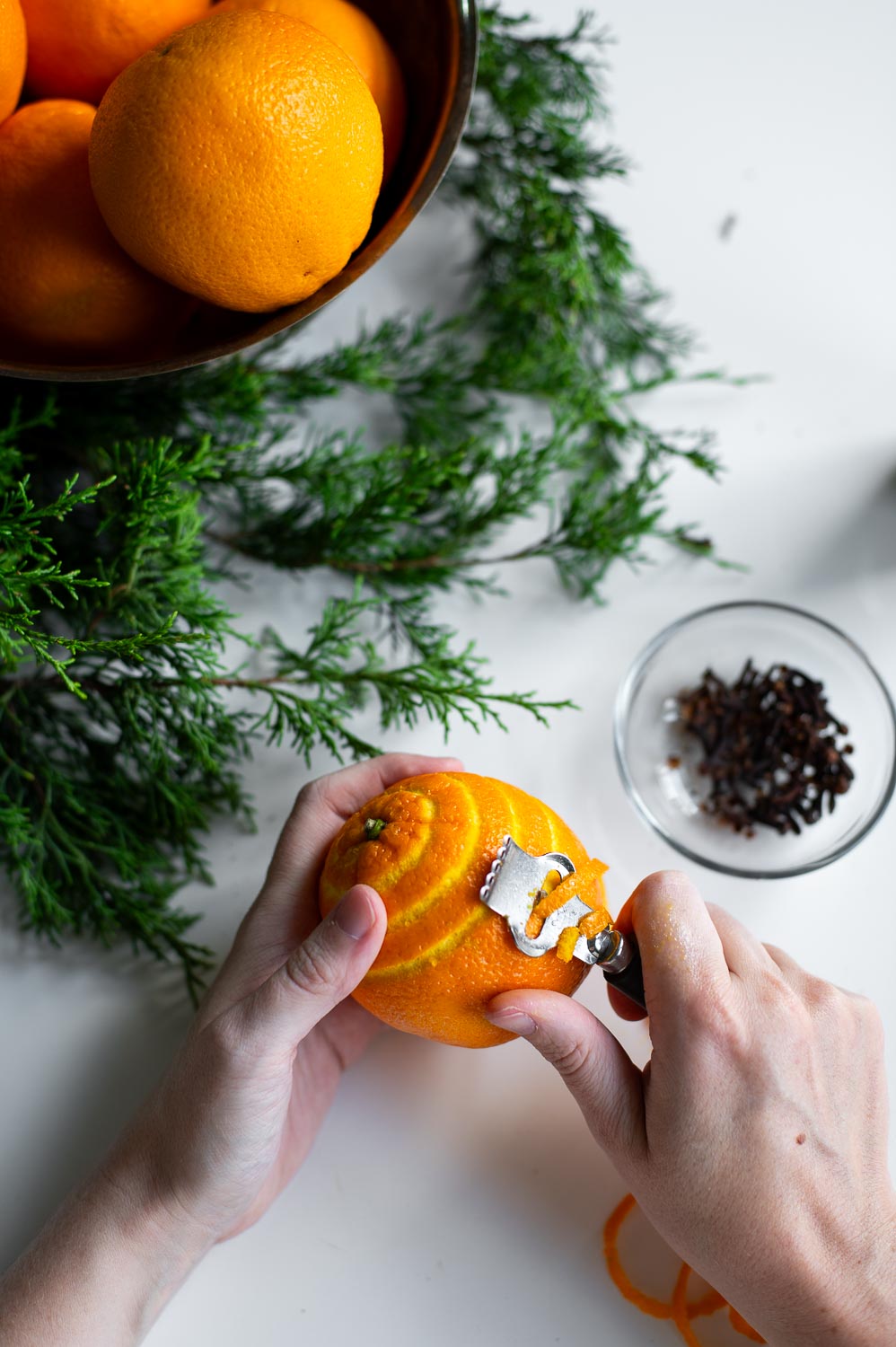
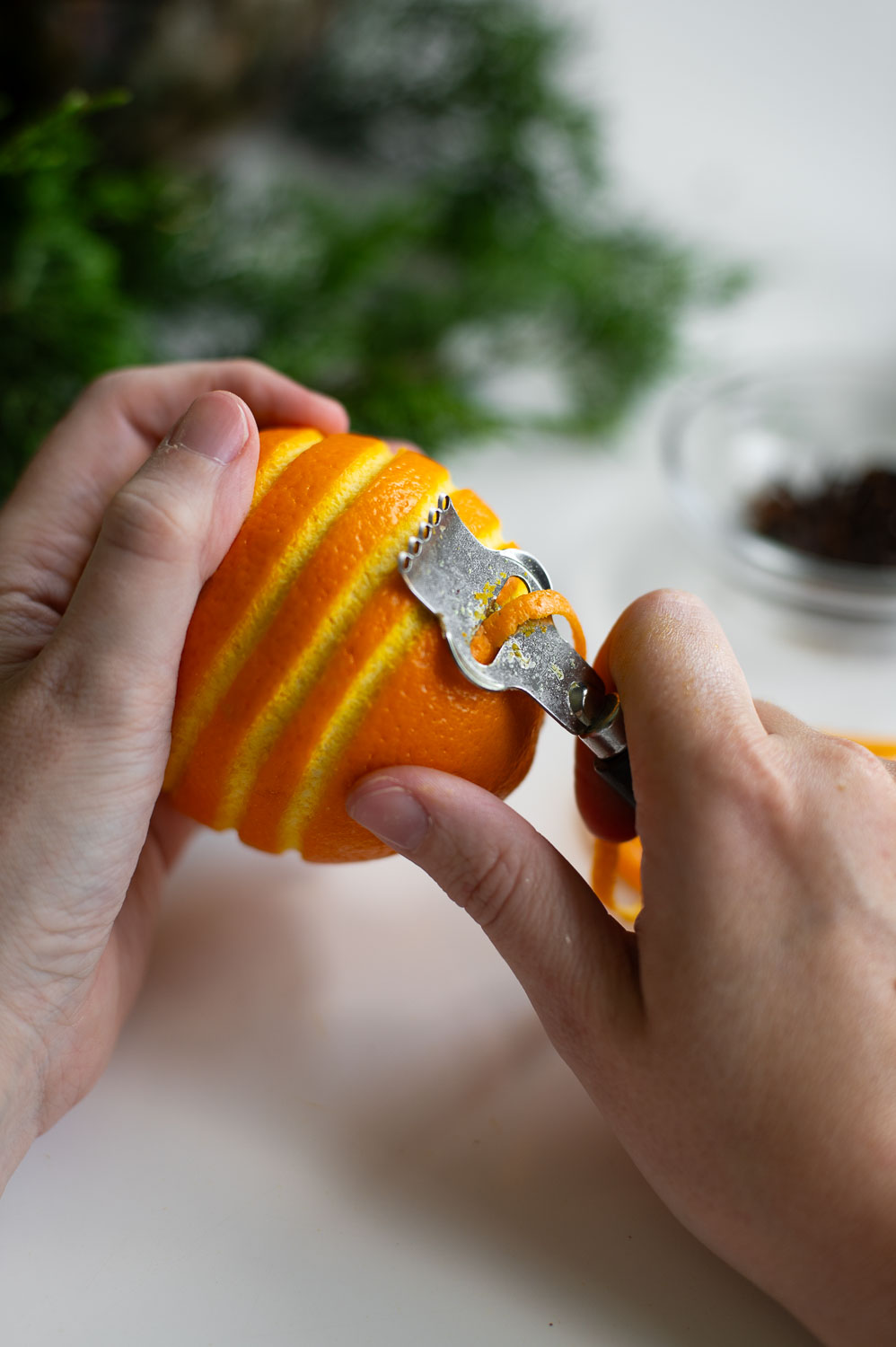
Once you’ve carved the channel, you’ll repeat the same process as before of poking holes with your toothpick along the channel and then filling them with cloves.
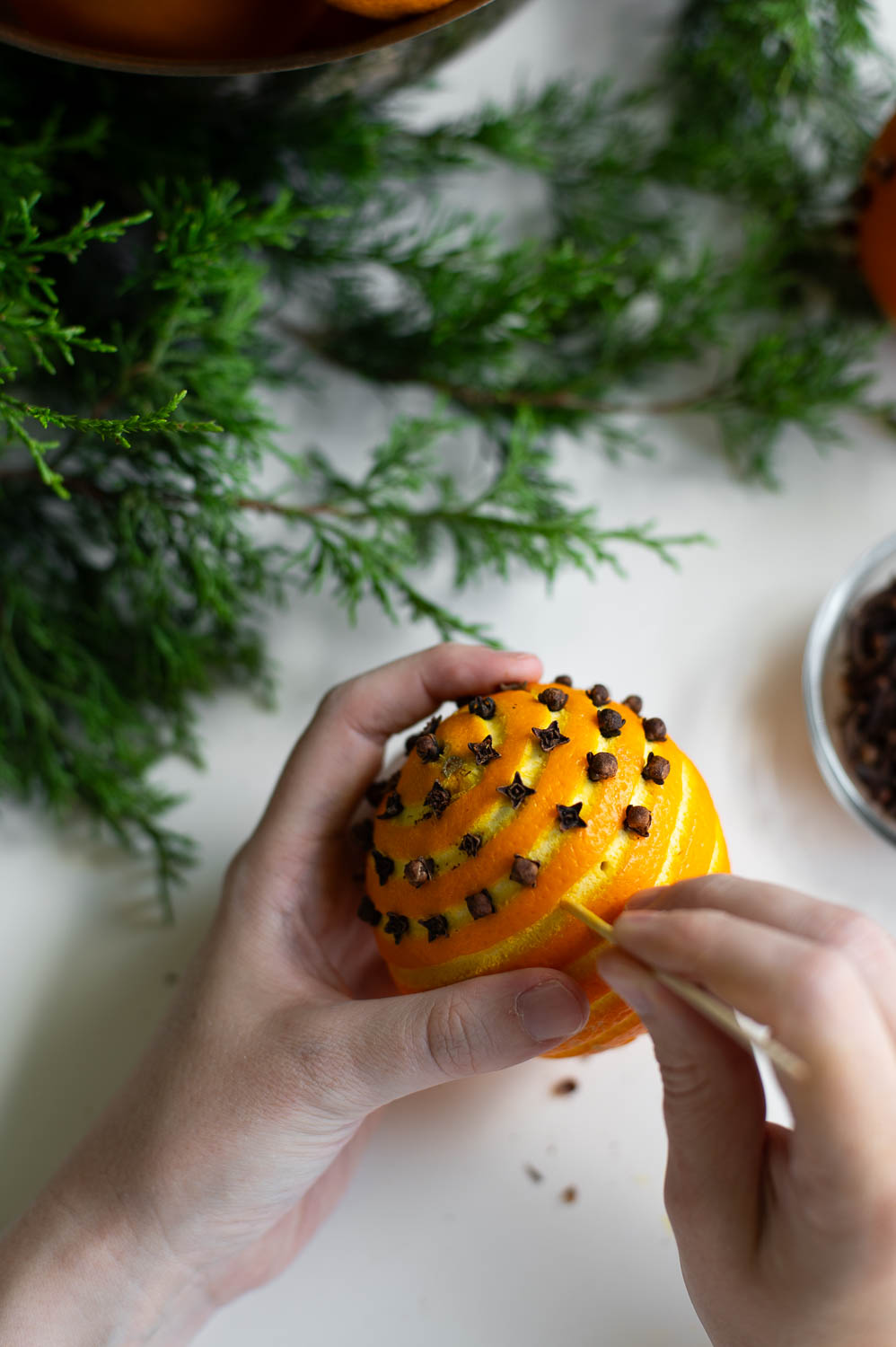
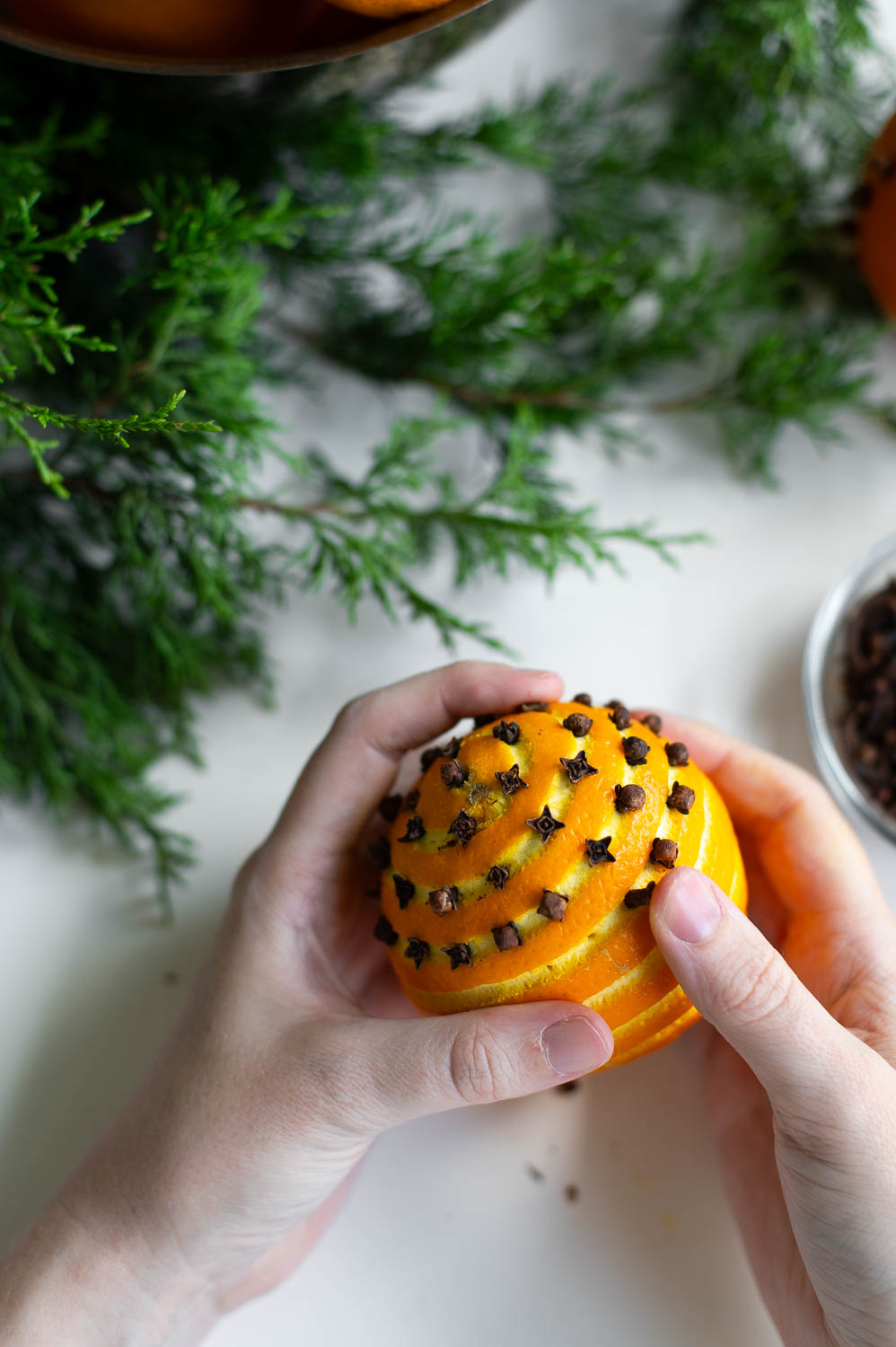
Frequently Asked Pomander Ball Questions
Now that you know how to make your Christmas pomander balls, let’s answer some of the top questions I get about these:
Q: How Long Do Pomander Balls Last?
A: It depends. Looking like they do in these photos? A few days before they start to dry out and shrink. However, dried pomander balls can last for weeks or even months and keep their scent for over a year.
Q: How Do You Dry Pomanders And Keep Them From Molding?
A: The best way to prevent mold is to roll your finished orange in more ground cloves and cinnamon. Then place it in a paper bag and leave it in a cool, dry place to cure for a few weeks.
Q: Can You Use Something Other Than Oranges?
A: Of course! Lemons, limes and even little mandarins can work really well for this. Oranges are simply the most traditional, but any citrus with a firm peel will hold up well for this process.
Q: What Do You Do With Them After They Are Made?
A: Most commonly pomander balls are displayed in a bowl, tied with ribbon and hung from garland, nestled into greenery, or stacked to create a tower. My favorite double use is to use (fresh not dried) pomanders as party decor then later in the evening throw them into a simmer pot with cider, mulled wine or even a flaming rum punch.
Q: How Do You Hang Pomander Balls As An Ornament?
A: There are many ways to do this including simply tying a ribbon in a criss-cross pattern around the orange (like you would around a present). However the classic way is to use a skewer or long toothpick to poke a hole through the center of the orange before adding cloves. Once the orange has dried you can thread a ribbon through the hole and tie it off to hang.
Q: Is This A Child-Friendly Christmas Craft?
A: Yes! While some portions of this project would need parental oversight or help, (like ensuring the orange is the only thing getting stabbed with the toothpick) in general this is a very child-friendly holiday craft project you can create together as a family. I found it works best to do the stabbing and channel knife work, then let my little helpers fill all the holes with cloves.
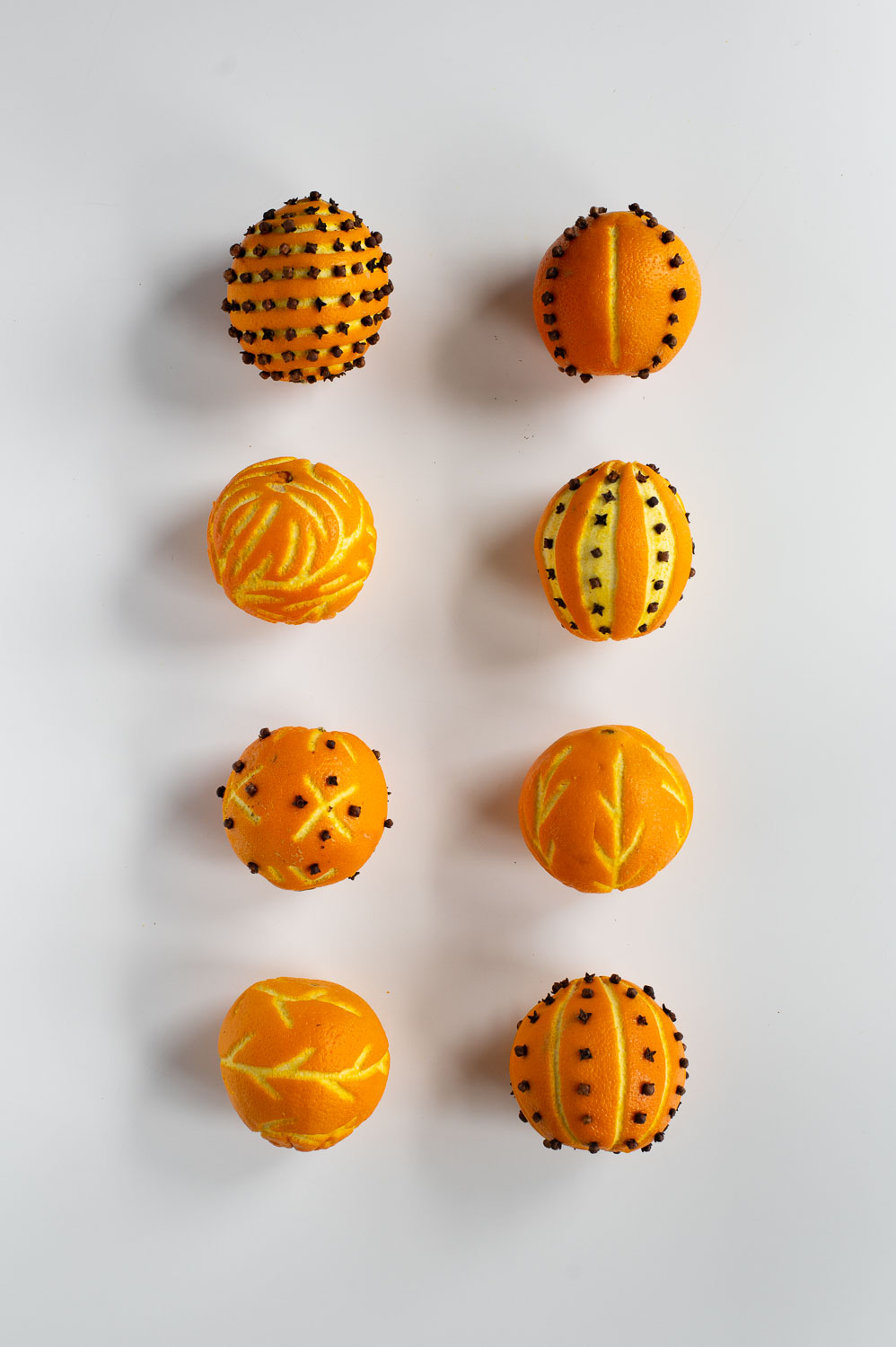
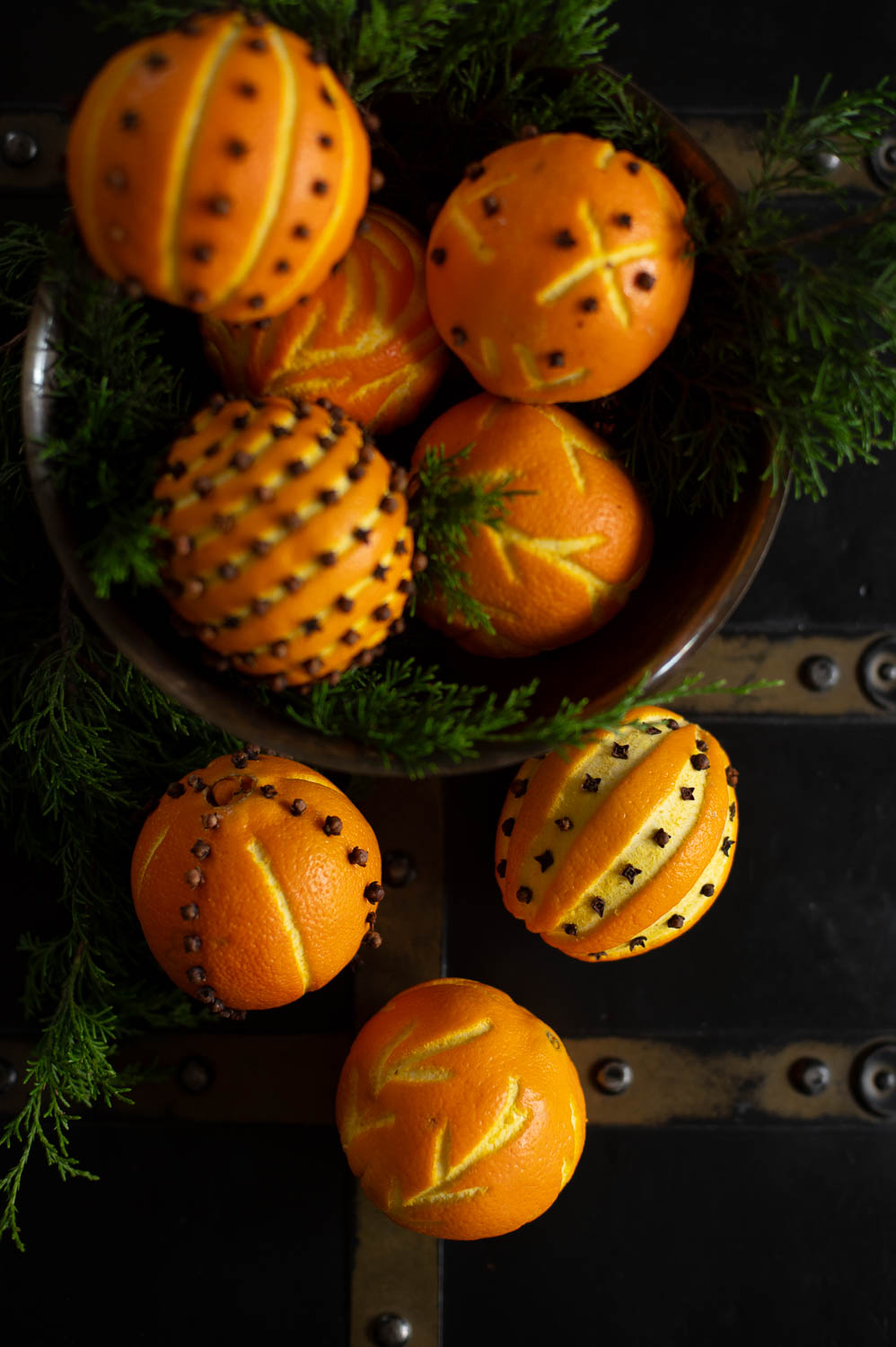
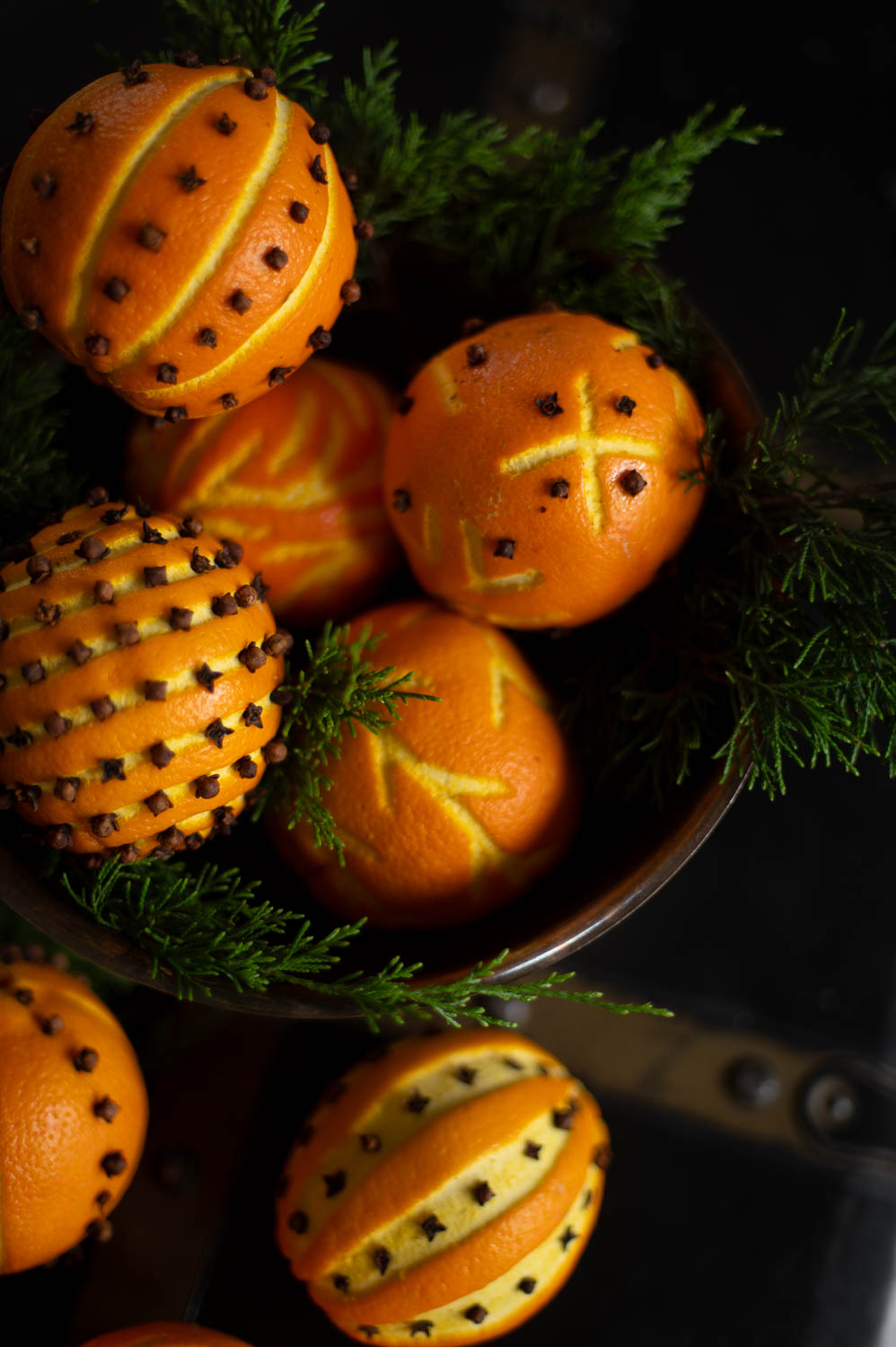
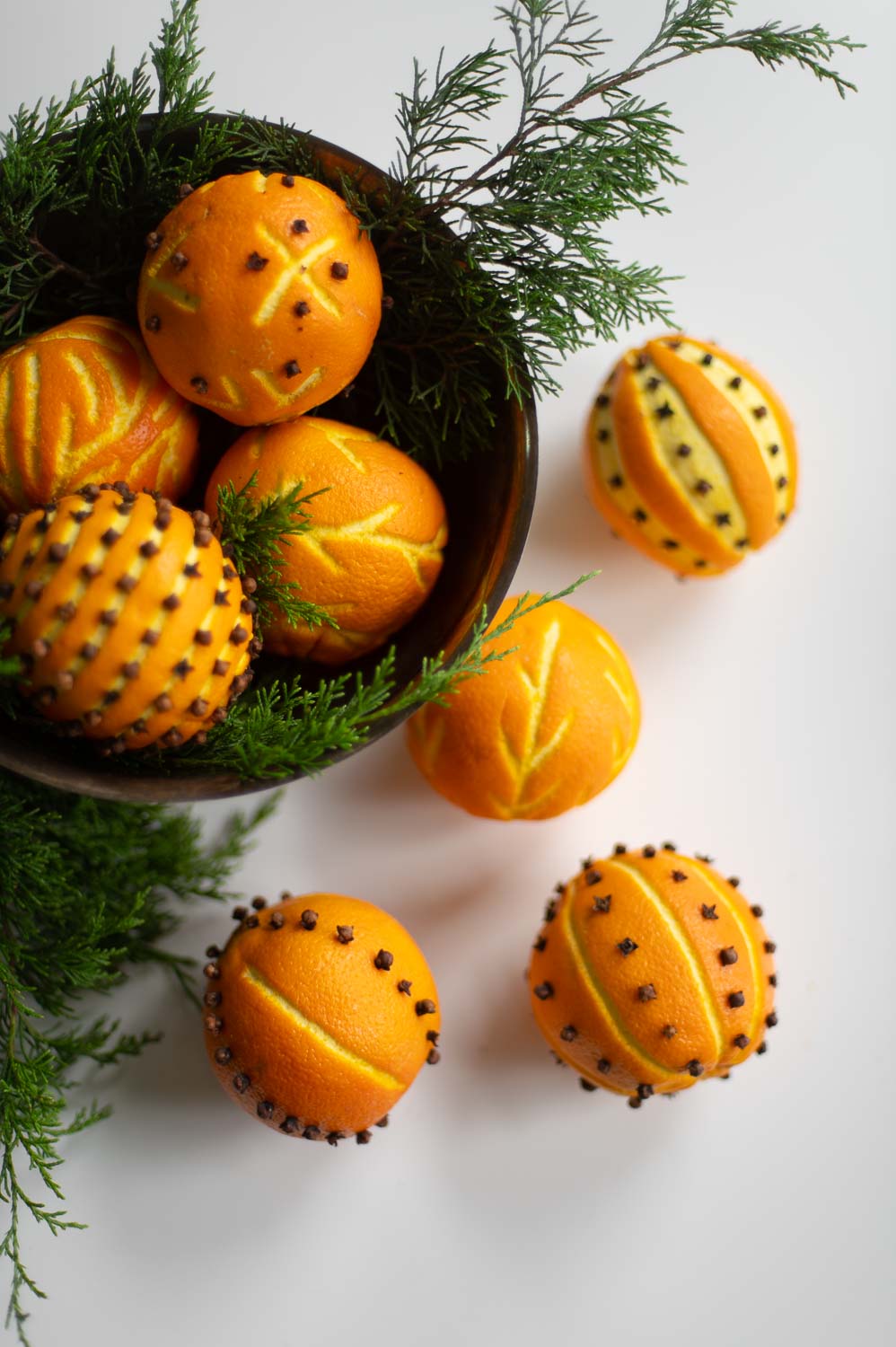
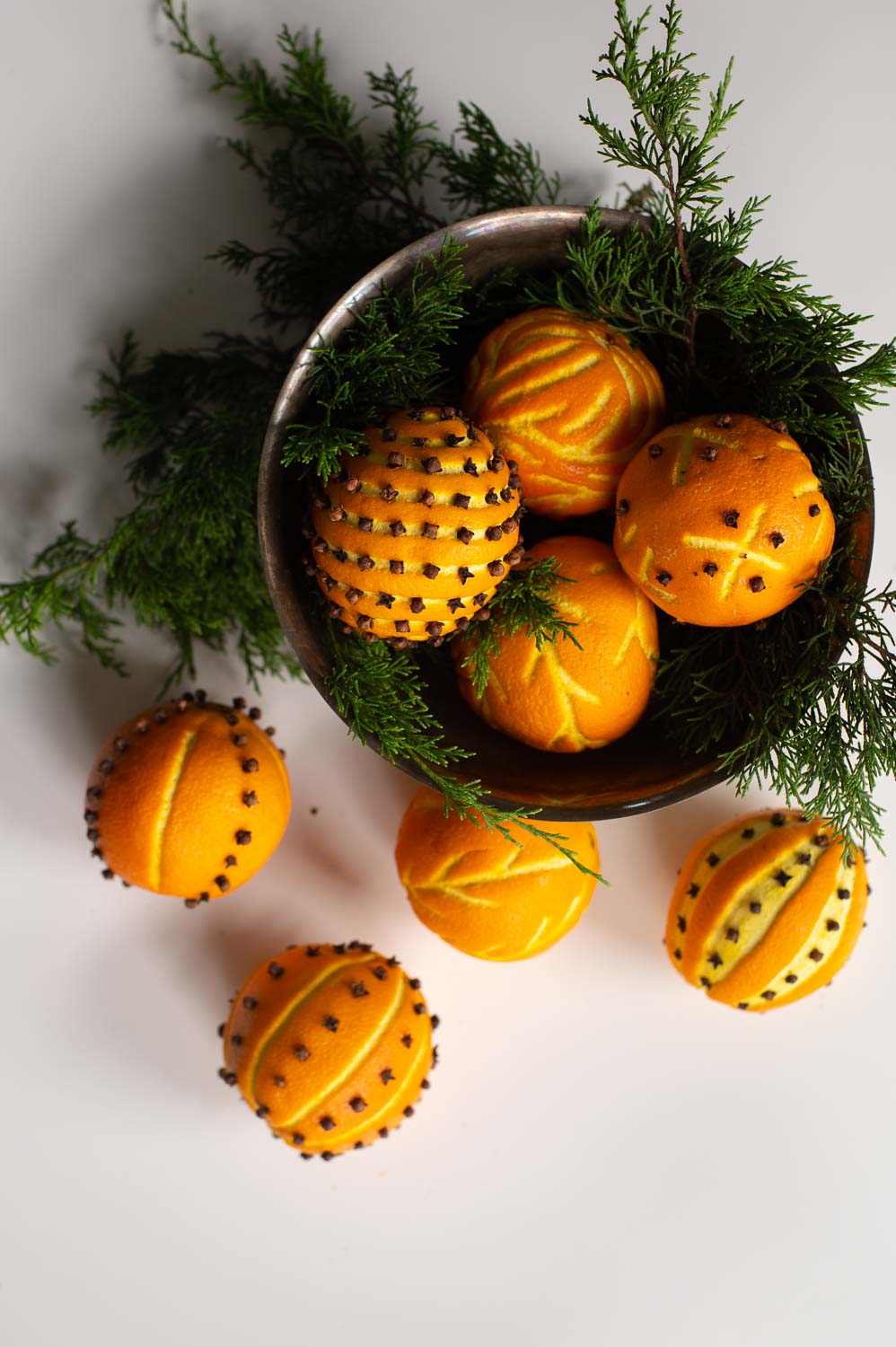
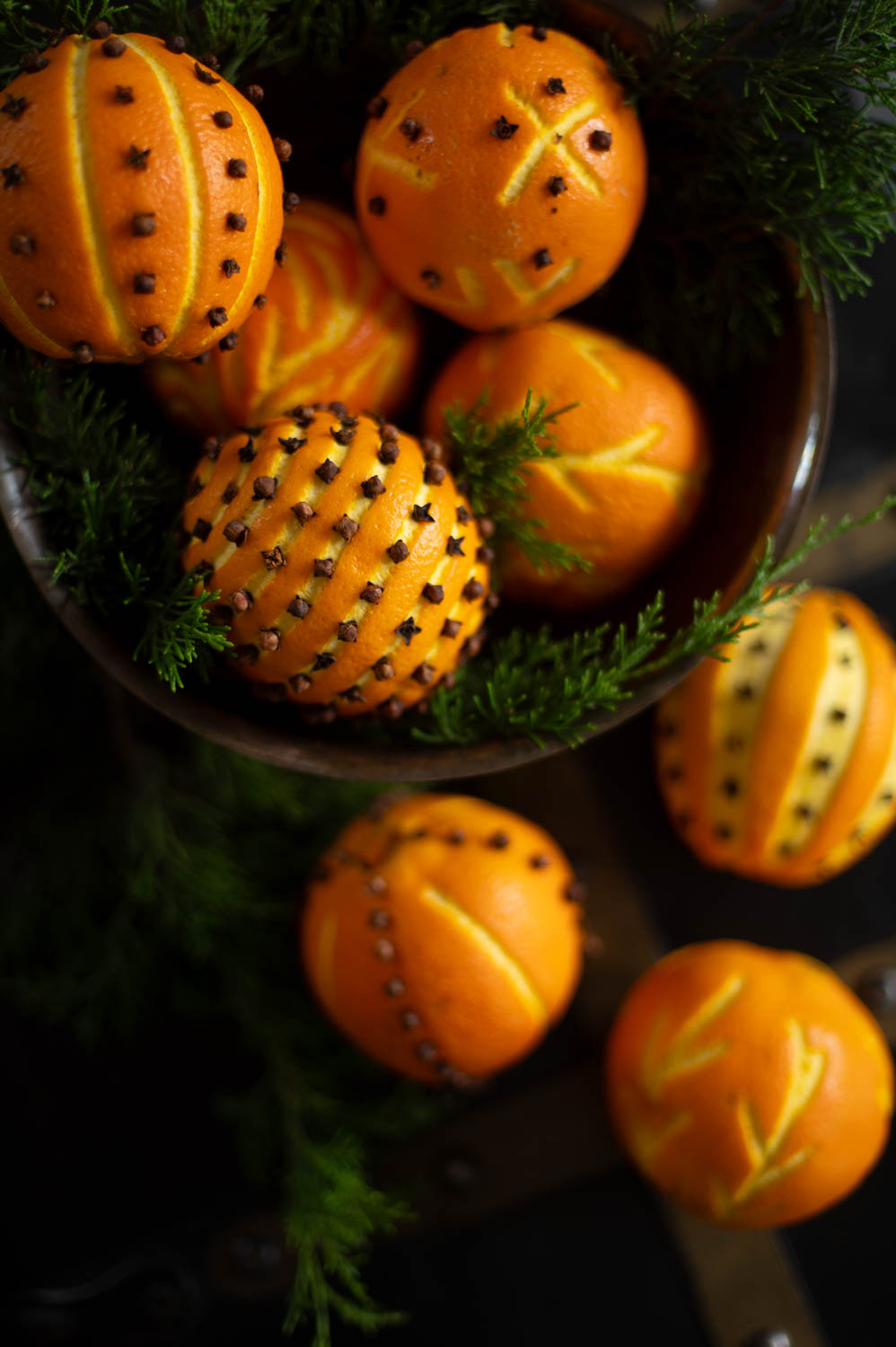
Final Thoughts
This is one of those simple yet satisfying holiday craft projects that fills me with so much joy every year. They’re inexpensive, easy to make, and the smell, THE SMELL these give off is just divine and instantly makes my home smell like Christmas.
I love that you can stay traditional with the designs or just go with the flow and get creative!
Need more ideas for how to create an old world Christmas? Then head over this post to get even more inspiration!
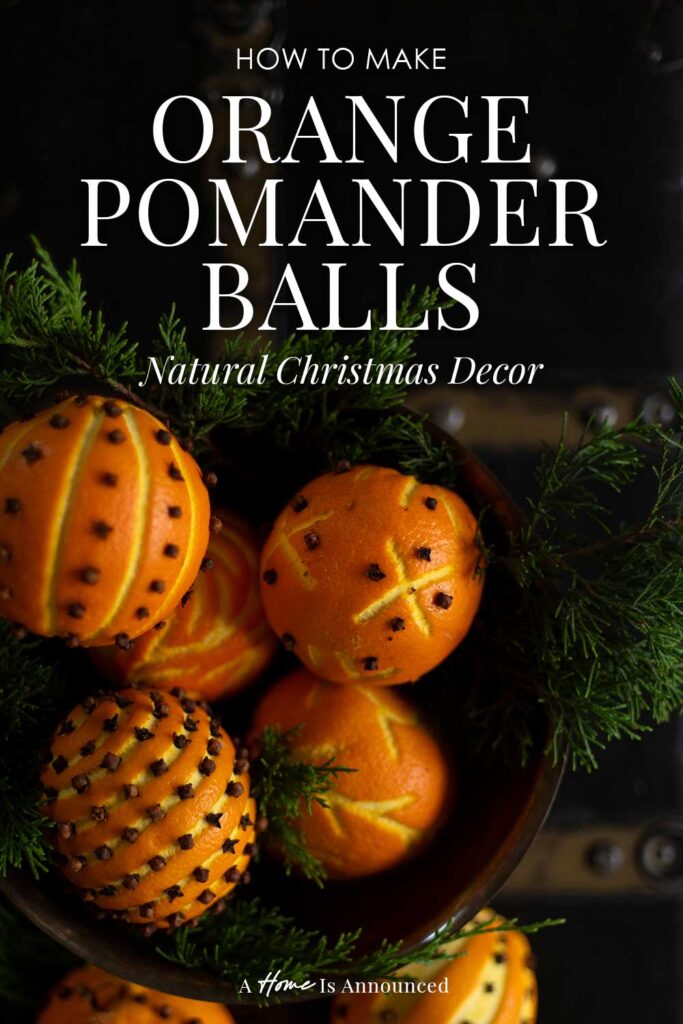
Don’t Forget To Pin This Post & Subscribe!
Want to keep getting more DIY home decor inspiration, thrifting tips & tricks, free art downloads, reading recommendations, and home renovation tutorials? Then don’t forget to pin this post for later so you can follow me on Pinterest and then subscribe to my blog so you can get links to my newest content as soon as it hits the blog!
